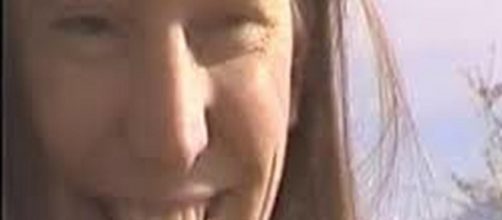Tate Modern in London takes a look back at the nearly 40-year career of American artist Jenny Holzer through July 31, 2019, with 88 works that often come without pictures. To best describe what she does, envision Francisco Goya's drawing series “Caprichos” with his telling messages, then subtract the imagery and you get Holzer's equally telling messages including those in her first series called “Truism,” like “Fear is the most elegant weapon; your hands are never messy.”
Sign of the times in capital letters
But there's another dimension to Holzer work besides words.
There are the high-tech forms they come in. Since 1982, when she began with her messages on T-shirts, her truisms have been seen emblazoned in LED advertising on Times Square billboards. With other digital technologies, her messages also have been seen in drones, projections, robotic assemblies and augmented reality mobile apps. Truth from this 21st century Goya clearly suit the times when tweets and texting is the way people exchange information. And she has a lot to exchange. She told The Guardian in an interview just how she feels about being an American with Trump in charge: “Aghast, demoralized, scared, disgusted,..I'm happy to be any place he isn't.” And she added, “There's work to be done,” as she busies herself with her pointed text-art, like this one: “Abuse of power comes as no surprise.”
Holzer's text-art is not as revolutionary as it seems
Talking about his text-art, Goya sounded like Holzer when he explained to the Diario de Madrid Feb.
6, 1799 why his art bears captions: “Art, like poetry, selects in the universe whatever she deems most appropriate to earn the title of inventor and not a servile copyist.” Captions to his drawings condemning the follies in the Spanish society in which he lived were acidic, particularly when he railed against "the innumerable foibles” of the ruling class and its prejudices and deceitful practices which self-interest have made usual." One of Goya’s nightmarish images, “The Sleep of Reason Produces Monsters” is a kind of pictorial directive to artists that there can be no rest for them in troubled times. Or as Holzer put it, “There's work to be done.”
Denying the president's deceits is a full-time job
Trump's deceits take a lot of work to keep up with.
According to the Washington Post, by the end of July in 558 days, Trump uttered 4,229 lies or misleading claims, like this one when he was pushing for tariffs: “U.S. farmers have done poorly for 15 years,” obviously ignoring a congressional report saying that from 2011 through 2014, American farms enjoyed “strong commodity prices and robust agricultural exports.” John Keats' famed ode applies here: "Beauty is truth, truth beauty - that is all ye know on earth and all ye need to know." Holzer reminds us of this when Tate Modern's website quotes her asserted goal: "To offer up beauty, to be funny and never lie."


